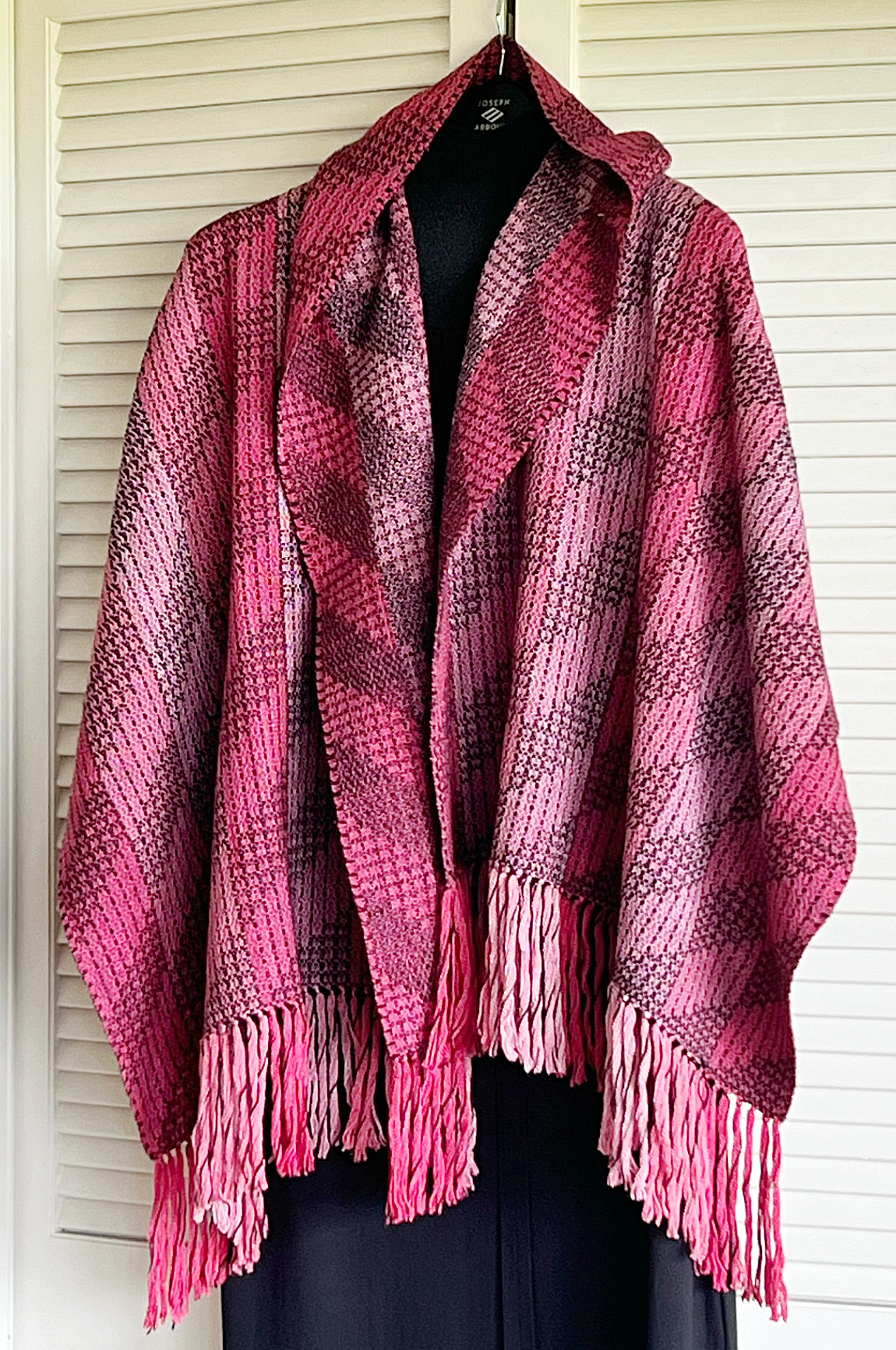May 2024: How Do I Weave Thee, Bateman Weaves? Let Me Count the Ways!
Woven by Marg Ayres
The photograph on the back cover of the booklet, by Linda Tilson Davis, Bateman Weaves, The Missing Monograph (2017) grabbed my attention, and I knew exactly the yarn that I wanted to use. I assumed that I would just find the draft in the Monograph. As I read the Monograph, I began to realize that there were many Bateman Blends that fit the Summer and Winter style of the draft I was seeking. The basic structure was 1 3 1 P 2 P 1 P 2 P where P=the pattern thread which would be on 4 for the first block, 5 for the next block, 6 for the next block, etc. You can find the Summer and Winter structure in the 1 – 2 – 1 - 2 tie arrangement. Here’s the Ah Ha! moment: For Bateman, the threads on 1 and 2 didn’t have to stay in 1 – 2 – 1 – 2 order. In fact, they could be in fourteen configurations:
1212 2121 1211 2122 1221
2112 1222 2111 1121 2212
1122 2211 1112 2221
(not 1111 or 2222)
My desired draft was one of these fourteen possibilities! I did find a draft on page 36 of the Monograph that was a start. I also found a chapter called Ten Thread Blocks in a booklet by Virginia I. Harvey, Bateman Blend Weaves, pages 72-108, (reprinted 2021) that helped to eliminate some of the permutations. I warped the loom in stripes of red and selected four possibilities: 1121 2121 2112 2221, and threaded each of four sections of the warp in one of the four orders that I’d selected. I assumed that they’d all look alike. Wrong! Each one had a slightly different appearance.
As Bateman says on page 13 of Bateman Blend Weaves: “This weave, then, is highly versatile. An astonishing number of strikingly different, beautiful weaves can be woven on the same warp. With all the permutations, the possibilities for use and exploration seem unlimited.”
I made a decision based on my four samples and re-threaded the warp. It was not too difficult to re-thread because I only had to change the 1 – 2 order, and I had left extra 1 and 2 heddles behind. The irony of my investigation is that I selected an order similar to Summer and Winter!
A wonderful explanation of Bateman Blend Weaves is in Weaving Innovations from the Bateman Collection, (2015), pages 11-12. I would start there for “How Do I Weave Thee, Bateman Weaves?”
Warp yarn: LavenderSheep (www.lavendersheep.com) 29% Merino/51% Silk/20% Seacell Seaside Lace Yarn in Dogwood Blossom, Hearts, Grapefruit, and Webs Valley Yarns, 100% Baby Alpaca, Black
Weft yarn: LavenderSheep Bordeaux and Baby Alpaca Black
Sett: 24 epi and 24 ppi, 2 per dent in a 12 dent reed.
Finishing: Washed in machine on delicate cycle in warm water and dried on warm.
Loom: 10 harness Macomber
Finished: Shawl: 22” wide and 70” long plus 5” fringe at each end.
Downloads:
Drawdown (.PDF)
Bio:
Marg began weaving in the early '70's when she purchased a rigid heddle loom during a visit to Seattle and returned with it to Connecticut. That purchase led to a love of weaving because it incorporated color and math. The purchase of a Bergman Loom followed, without knowing about its local Seattle history. Then she and her husband bought acreage to build a solar house and to raise sheep (selected for cute not fleece quality, Cotswolds and black sheep), and that led to a Macomber Loom to weave rugs to use the "cute" fleeces. A retirement and following grandchildren have brought the looms and wool back to where it all started, Seattle!



